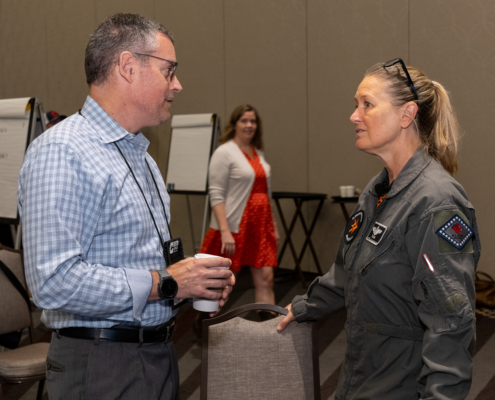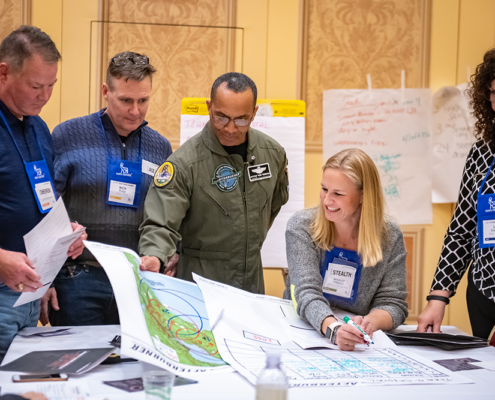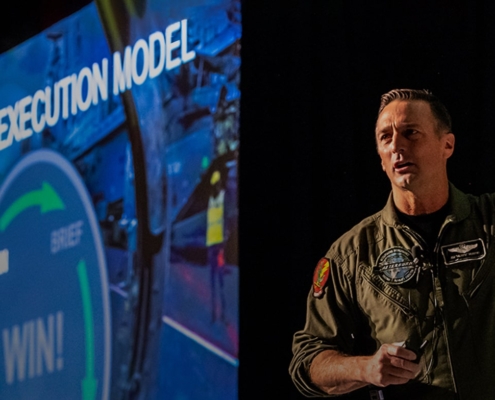 https://www.afterburner.com/wp-content/uploads/2024/11/High-Impact-Leader-Crete2024Summit-677-scaled.jpg
1707
2560
Ansley Anchors
/wp-content/uploads/2024/07/Afterburner-Logo-Resize-Fullcolor-300x93.png
Ansley Anchors2024-11-05 10:52:592024-11-20 14:55:53The Top 5 Attributes of a High-Impact Leader
https://www.afterburner.com/wp-content/uploads/2024/11/High-Impact-Leader-Crete2024Summit-677-scaled.jpg
1707
2560
Ansley Anchors
/wp-content/uploads/2024/07/Afterburner-Logo-Resize-Fullcolor-300x93.png
Ansley Anchors2024-11-05 10:52:592024-11-20 14:55:53The Top 5 Attributes of a High-Impact Leader
Creating a Successful Team
Think back to your last on-the-job training or even back to your college days—what comes to mind? For many of us, there is at least one principle or concept that comes to mind as clearly as the day you first heard it. And often times, it’s no longer valid in your current environment.
But what’s important about that concept isn’t in the relevancy, it’s in the memorability. Of all the things you’ve learned in your lifetime, why does that one concept come to mind? Understanding how individuals learn is a field of study that continues to evolve, especially in today’s complex learning environment. It also feeds directly into what it takes to becoming successful teams.
For the past twenty years, our team has delivered experiential learning programs to every kind of organization you can imagine. Whether the industry is manufacturing, retail, banking or healthcare, or the function is sales, finance, operations or IT, there are a number of facilitation truths that we’ve found applicable across all verticals of an organization.
Steps to Building High Performance Teams:
Content matters – Show it off
Quick Reference Card for the planning process. Whether live or virtual, your audience needs to not only apply what they are learning, but see the results it can deliver. Keep the material simple and the experience that surrounds it complex in order to build greater connections in the neural network. Outline a few simple points in the instruction but spend the lion’s share of the course exercising the learning in real or near-real simulations.
Furthermore, give participants a simple take-away summarizing the content on a single sheet of paper. We use a quick reference card (QRC) that outlines the FLEX CycleSM for our clients and over the years, we’ve had participants using these QRCs as much as a decade later. And in an increasingly paperless, virtual world, tangible materials can have an enormous lasting impact.
Shock and Awe – Surprise the learner!
Don’t be afraid to openly challenge pre-conceived notions and assumptions. It’s not just about the rationality and usefulness of the knowledge being transferred, it’s also about the emotional experience and how the learner engages with it. Use true stories to illustrate the value of the learning. Juxtapose the learning in action versus the failure to use it. Demonstrate how others that have used the learning have done so with great success.
Get active – move around
The Afterburner Day team building seminar gets participants on their feet for better employee training ROIA desk or table and chair is a barrier to learning . . . so is a podium. Learners are too easily lulled into complacency, indifference, and apathy when shielded behind furniture. Movement increases blood flow which, in turn, increases reception and attention. Engagement with the facilitator and other students leverages the natural socialization of the learning and improves retention and engagement.
Overcome the fear of failure – make sure it occurs
Research demonstrates that our brains will attend to failures more than successes. Making the material easy doesn’t facilitate the attention and grit needed to fix the learning in memory so create an environment where it is safe to fail. Mix tough problems with tricky ones to challenge participants to leverage new learning in order to overcome those challenges in an environment where failure is not only safe, it’s probable. Set them up to fall for their own pre-conceptions and assumptions, then help them assess their performance unemotionally to highlight the learning.
Even in a world where content curation is becoming an overwhelming responsibility of learning and development professionals, how that content is delivered still matters—and may matter more than ever. In a universe of exploding content and growing noise, the quality of facilitation will be an ever more important mark of training effectiveness.
Successful Teams Set the Tone
Combat is a world of high stress and low margin for error that is fueled by adrenaline. The manner in which military aviators prepare for and start our missions is critical to being successful teams.
But setting the tone isn’t just for missions executed from a cockpit – it’s for missions executed anywhere. Whether you’re executing your mission from an office in Shanghai, an oil rig in the Gulf, an R&D lab in Palo Alto or anywhere else for that matter, setting the right tone will have significant impact on your results.
At the tactical level, setting the tone can bring immediate, tangible improvement in day-to-day operations while reinforcing your desired cultural characteristics and building a sustainable organizational culture at the strategic level (what we call the Organizational Identity). Here are just a few ways you can set the right tone for your 2016 mission:
| SETTING THE TONE TACTICALLY
► Start and End Meetings on Time
This isn’t a novel idea, nor is it as easy as it might seem, but it is one of the most impactful ways to establish disciplined operations. When you start and end meetings on time, it demonstrates your respect for the participants’ schedules and sets the expectation for actionable meeting deliverables within a specified timeline
► Hold Yourself Accountable
Accountability is a common challenge with a fairly simple solution: hold yourself accountable so that others may learn how to do so. As a leader who is capable of self-identifying missteps or Task Saturation and committing to correcting or preventing their recurrence, you are demonstrating a rare leadership quality that will build trust and empower team members to identify and correct issues autonomously.
► Don’t Just Acknowledge — Celebrate — Small Wins
Your teams’ tactical missions and daily efforts should align to and directly support your business strategy goals, so small wins (no matter how small) should be celebrated. This doesn’t have to be a true celebration with balloons, cake, and Tom from accounting but it does need to be applauded with emphasis on the strategic execution goals that were advanced due to the small win. Whether your team wins a new account or meets a project deadline, celebrate the results and you’ll increase your chances of seeing them over and over again.
| SETTING THE TONE STRATEGICALLY
► Act With Discipline
A large part of team dysfunction is due in part to a lack of operational discipline. Organizational excellence is found in cultures where discipline is an underlying but omnipotent element of day-to-day operations. This will take time and patience, and the first step in enabling good habits developing and adhering to standard operating procedures (SOPs).
► Build a Culture of Continuous Learning
The power of Flawless Execution lies in the iterative, four-phase methodology of the Flawless Execution CycleSM. Why? Because we know that performance excellence is only possible through iterative improvement, and the FLEX Cycle provides the simple tools to scale iterative improvements up, down and across different verticals and levels in your organization. By starting with a process-oriented approach to continuous learning, individuals will begin to consciously and subconsciously seek better solutions or ways of executing, organically creating a learning culture.
► Be a Mission-First Leader
Last week the fiscal year ended for many organizations and whether written on a sheet of paper or plastered on a dashboard, annual goals were reviewed for performance. Whether you cringe at the thought or celebrated a great year, it doesn’t matter. That’s right, whether you exceeded your goals or missed by a long-shot, your past performance does not matter—it will not help you win in the new year—but your previous year’s Lessons Learned will. Your Lessons Learned from last year’s debrief should already be incorporated into your new Mission Plan, no need to reflect on them. If the stakes are higher because of past performance, that’s all the more reason to keep your team focused on the mission—the new year’s mission. Your team is operating in complex, rapidly changing environments that require 100% focus so it’s your job as a leader to help them “forget” last year and think today and beyond because that’s where you’re going.
Find the Tone You Set With a Team Building Seminar
There are many things you can do to set the tone for your team this year, and doing nothing isn’t one of them. Demonstrate your excitement for the opportunities that lie ahead and the team who will make it all possible and that excitement will feed the momentum to make this year all it can be. Learn more about our team building seminars to get started.
Share This Post
More Like This
 https://www.afterburner.com/wp-content/uploads/2024/11/High-Impact-Leader-Crete2024Summit-677-scaled.jpg
1707
2560
Ansley Anchors
/wp-content/uploads/2024/07/Afterburner-Logo-Resize-Fullcolor-300x93.png
Ansley Anchors2024-11-05 10:52:592024-11-20 14:55:53The Top 5 Attributes of a High-Impact Leader
https://www.afterburner.com/wp-content/uploads/2024/11/High-Impact-Leader-Crete2024Summit-677-scaled.jpg
1707
2560
Ansley Anchors
/wp-content/uploads/2024/07/Afterburner-Logo-Resize-Fullcolor-300x93.png
Ansley Anchors2024-11-05 10:52:592024-11-20 14:55:53The Top 5 Attributes of a High-Impact Leader https://www.afterburner.com/wp-content/uploads/2024/09/fighter-jet-performing-quick-ariel-maneuver.jpeg
1280
1920
Nate Riggins
/wp-content/uploads/2024/07/Afterburner-Logo-Resize-Fullcolor-300x93.png
Nate Riggins2024-01-02 19:53:032024-11-20 14:55:544 Ways to Boost Your Team’s Morale and Hit Your Revenue Targets
https://www.afterburner.com/wp-content/uploads/2024/09/fighter-jet-performing-quick-ariel-maneuver.jpeg
1280
1920
Nate Riggins
/wp-content/uploads/2024/07/Afterburner-Logo-Resize-Fullcolor-300x93.png
Nate Riggins2024-01-02 19:53:032024-11-20 14:55:544 Ways to Boost Your Team’s Morale and Hit Your Revenue Targets https://www.afterburner.com/wp-content/uploads/2024/09/Group_Meeting_2-1.jpeg
1707
2560
Nate Riggins
/wp-content/uploads/2024/07/Afterburner-Logo-Resize-Fullcolor-300x93.png
Nate Riggins2024-01-02 18:26:092024-11-20 14:55:54Fueling Business Agility: The Strategic Pivot
https://www.afterburner.com/wp-content/uploads/2024/09/Group_Meeting_2-1.jpeg
1707
2560
Nate Riggins
/wp-content/uploads/2024/07/Afterburner-Logo-Resize-Fullcolor-300x93.png
Nate Riggins2024-01-02 18:26:092024-11-20 14:55:54Fueling Business Agility: The Strategic Pivot https://www.afterburner.com/wp-content/uploads/2024/09/airborn-fighter-jet-using-afterburners-1.jpeg
1080
1920
Nate Riggins
/wp-content/uploads/2024/07/Afterburner-Logo-Resize-Fullcolor-300x93.png
Nate Riggins2024-01-02 18:19:252024-11-20 14:55:55Combat Distractions and Boost Your Revenue – Fighter Pilot-Style
https://www.afterburner.com/wp-content/uploads/2024/09/airborn-fighter-jet-using-afterburners-1.jpeg
1080
1920
Nate Riggins
/wp-content/uploads/2024/07/Afterburner-Logo-Resize-Fullcolor-300x93.png
Nate Riggins2024-01-02 18:19:252024-11-20 14:55:55Combat Distractions and Boost Your Revenue – Fighter Pilot-Style https://www.afterburner.com/wp-content/uploads/2024/09/jamie-street-_94HLr_QXo8-unsplash-1.jpeg
1380
2048
Nate Riggins
/wp-content/uploads/2024/07/Afterburner-Logo-Resize-Fullcolor-300x93.png
Nate Riggins2024-01-02 15:02:302024-11-20 14:55:553 Steps New Leaders Must Include in Their Strategic Planning Process
https://www.afterburner.com/wp-content/uploads/2024/09/jamie-street-_94HLr_QXo8-unsplash-1.jpeg
1380
2048
Nate Riggins
/wp-content/uploads/2024/07/Afterburner-Logo-Resize-Fullcolor-300x93.png
Nate Riggins2024-01-02 15:02:302024-11-20 14:55:553 Steps New Leaders Must Include in Their Strategic Planning Process https://www.afterburner.com/wp-content/uploads/2024/09/team-looking-at-map-to-focus-on-improving-teamwork-in-the-workplace-1.png
667
1000
Nate Riggins
/wp-content/uploads/2024/07/Afterburner-Logo-Resize-Fullcolor-300x93.png
Nate Riggins2024-01-02 03:00:272024-11-20 14:55:554 Tips for Improving Teamwork in the Workplace
https://www.afterburner.com/wp-content/uploads/2024/09/team-looking-at-map-to-focus-on-improving-teamwork-in-the-workplace-1.png
667
1000
Nate Riggins
/wp-content/uploads/2024/07/Afterburner-Logo-Resize-Fullcolor-300x93.png
Nate Riggins2024-01-02 03:00:272024-11-20 14:55:554 Tips for Improving Teamwork in the Workplace https://www.afterburner.com/wp-content/uploads/2024/09/planning-1.jpeg
933
1400
Nate Riggins
/wp-content/uploads/2024/07/Afterburner-Logo-Resize-Fullcolor-300x93.png
Nate Riggins2023-05-02 20:23:162024-11-20 14:55:58Using Brain Chemistry For Building High-Performance Teams
https://www.afterburner.com/wp-content/uploads/2024/09/planning-1.jpeg
933
1400
Nate Riggins
/wp-content/uploads/2024/07/Afterburner-Logo-Resize-Fullcolor-300x93.png
Nate Riggins2023-05-02 20:23:162024-11-20 14:55:58Using Brain Chemistry For Building High-Performance Teams https://www.afterburner.com/wp-content/uploads/2024/09/afterburner-banner-image-ceo-jim-murphy-giving-a-presentation_crop-1.jpeg
784
1920
Nate Riggins
/wp-content/uploads/2024/07/Afterburner-Logo-Resize-Fullcolor-300x93.png
Nate Riggins2022-11-14 21:30:142024-11-20 14:55:58What If Your Teams Were Truly High Performing?
https://www.afterburner.com/wp-content/uploads/2024/09/afterburner-banner-image-ceo-jim-murphy-giving-a-presentation_crop-1.jpeg
784
1920
Nate Riggins
/wp-content/uploads/2024/07/Afterburner-Logo-Resize-Fullcolor-300x93.png
Nate Riggins2022-11-14 21:30:142024-11-20 14:55:58What If Your Teams Were Truly High Performing?
Top Three Threats to Employee Morale in Today’s Economy
Business Culture, Leadership, Motivation, Team BuildingAbout Us
Building Strong Teams Through the Guidance of Fighter Pilot Keynote Speakers.

